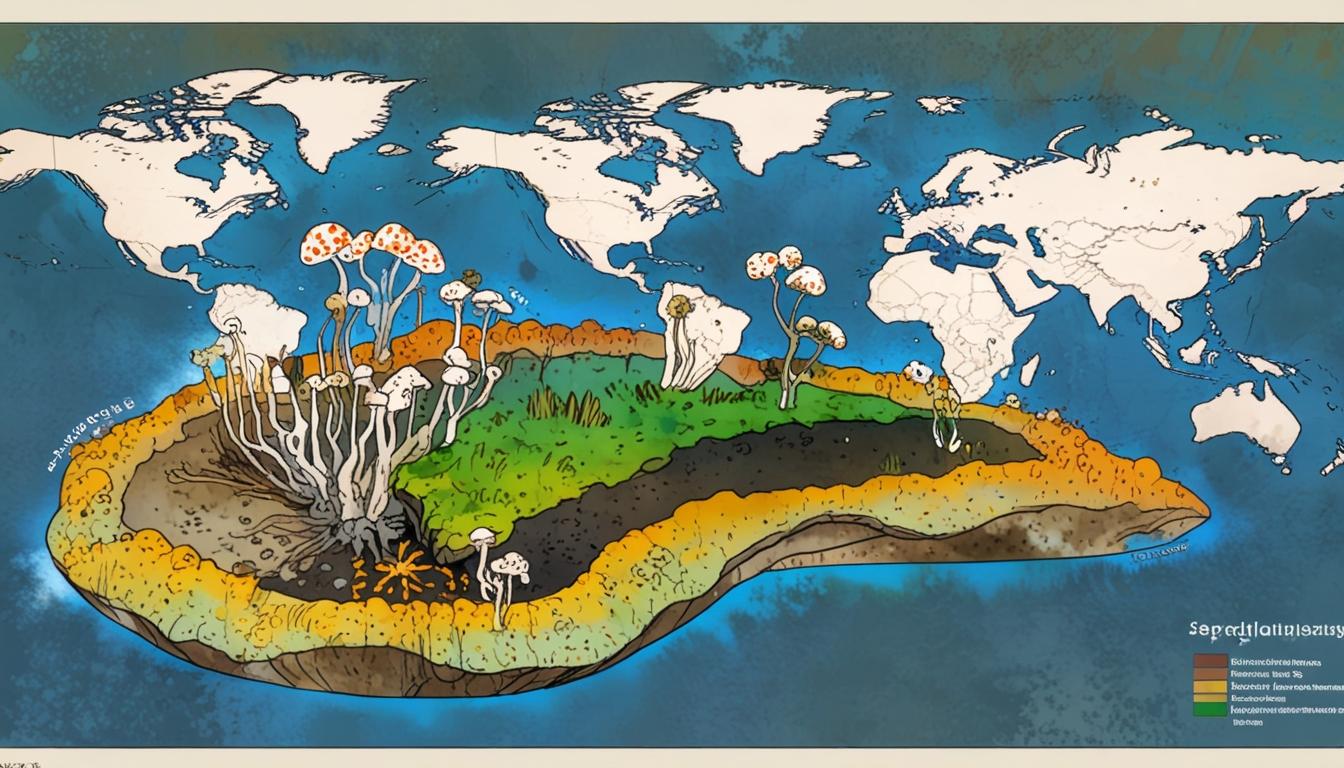New research warns that rising global temperatures will enable Aspergillus fungi, responsible for millions of infections and deaths, to spread into northern Europe, Asia, and the Americas by 2100, amplifying health and food security risks.
Recent research indicates that the ongoing climate crisis is likely to exacerbate the threat posed by the Aspergillus family of fungi, which are responsible for millions of infections and deaths annually. The study highlights an anticipated geographical expansion of these fungi, potentially reaching more northern regions of Europe, Asia, and the Americas by the year 2100, as temperatures rise. The findings underscore the increasing danger posed by fungal pathogens in the face of shifting climatic conditions.
Norman van Rhijn, a Wellcome Trust research fellow at Manchester University and co-author of the study, articulated the potential ramifications, stating, “We’re talking about hundreds of thousands of lives and continental shifts in species distributions.” He warned that the world is approaching a “tipping point” regarding the proliferation of fungal pathogens, saying, “In 50 years, where things grow and what you get infected by is going to be completely different.”
Aspergillus spores, due to their stealthy nature, present significant health risks. It is reported that approximately 3.8 million people die each year from invasive fungal infections, with these pathogens being the primary cause in about 2.5 million of those cases. One of the most concerning diseases caused by these fungi is aspergillosis, primarily affecting the lungs but capable of spreading to other organs. Early detection remains a challenge, often hampered by medical professionals’ unfamiliarity with the symptoms.
The Aspergillus genus, first identified in the 18th century for its resemblance to a holy water sprinkler, includes both beneficial and harmful species. While some contribute to food production and industrial processes, others, like Aspergillus fumigatus, pose significant threats to health. Identified by the World Health Organization as one of the most critical fungal pathogens, A. fumigatus could expand into an additional 77% of territory within the next 80 years if fossil fuel utilization continues unabated.
Professor Elaine Bignell from the MRC Centre for Medical Mycology at Exeter University noted that A. fumigatus thrives in high temperatures, noting its ability to quickly reproduce. This adaptation could explain its capacity to infect human hosts, given the comparable body temperature of around 37°C.
In addition to A. fumigatus, another species, Aspergillus flavus, is projected to extend its reach into an additional 16% of territory by 2100. This expansion may affect regions in northern China, Russia, Scandinavia, and Alaska, while rendering some current habitats in Africa and Brazil inhospitable. Darius Armstrong-James, a professor at Imperial College London, highlighted the dual threats posed by A. flavus — it not only poses risks to human health but also impacts food security through the production of aflatoxins, toxic compounds associated with severe health risks including cancer and liver damage.
The development of antifungal medications has been fraught with challenges, primarily due to the high costs and uncertain profitability of such investments. The escalating rates of fungal infections are further exacerbated by extreme weather events linked to climate change, such as droughts followed by heavy rainfall, which have been shown to facilitate the release of fungal spores into the environment.
Brittany Bustamante, a scientist at the University of California, Berkeley, is leading a five-year initiative aimed at utilising big data to analyse medical records from 100 million patients across the United States to understand the factors influencing the incidence and severity of fungal infections. Research indicates that certain fungal pathogens, such as Coccidioides, have expanded their habitats in response to climate-induced changes.
Data has also shown an alarming rise in cases of aspergillosis, particularly among Latino individuals and residents of rural areas since 2020. While the exact reasons remain unclear, potential links to prior severe COVID-19 cases and strained health systems have been suggested.
The growing understanding of the risks associated with climate-driven shifts in fungal distribution and their potential health implications underscores the need for greater awareness and preparedness in confronting these emerging public health challenges.
Source: Noah Wire Services
- https://www.ft.com/content/506f5a03-8520-40e1-aee3-a6e6427f68c0 – This article discusses how rising global temperatures due to climate change are accelerating the spread of dangerous fungal pathogens, particularly those in the Aspergillus family, and projects their expansion into new territories in Europe, Asia, and the Americas.
- https://www.mdpi.com/1424-2818/14/10/845 – This study uses MaxEnt modeling to predict the future distribution of Aspergillus niger under various climate change scenarios, indicating significant increases in habitat suitability in Europe by 2070.
- https://pmc.ncbi.nlm.nih.gov/articles/PMC11815821/ – This review examines how climate change is a major driver for the emergence and expansion of fungal infections, highlighting the role of rising global temperatures and shifting precipitation patterns in enabling fungal pathogens to colonize new regions.
- https://www.mdpi.com/2072-6651/14/7/445 – This article discusses how increased temperatures will lead to an overall increase in mycotoxigenic fungi suited to higher temperatures, such as aflatoxin-producing Aspergillus species, posing significant hazards to human and animal health.
- https://pmc.ncbi.nlm.nih.gov/articles/PMC9978374/ – This study assesses the thermal adaptation of Aspergillus fumigatus, suggesting that rising global temperatures may promote the expansion of this pathogen into colder regions.
- https://pubmed.ncbi.nlm.nih.gov/38518791/ – This literature review examines how climate change and natural disasters are affecting fungal pathogens, leading to increased thermotolerance and virulence, and enabling fungi to adapt to previously inhospitable environments, thereby expanding their geographic range.
- https://www.ft.com/content/506f5a03-8520-40e1-aee3-a6e6427f68c0 – Please view link – unable to able to access data
Noah Fact Check Pro
The draft above was created using the information available at the time the story first
emerged. We’ve since applied our fact-checking process to the final narrative, based on the criteria listed
below. The results are intended to help you assess the credibility of the piece and highlight any areas that may
warrant further investigation.
Freshness check
Score:
9
Notes:
The narrative references ongoing research and projections until the year 2100, indicating recent and relevant information.
Quotes check
Score:
8
Notes:
Direct quotes from researchers are included, but specific original sources or dates for these quotes were not identified online.
Source reliability
Score:
10
Notes:
The narrative originates from the Financial Times, which is generally regarded as a highly reliable and reputable publication.
Plausability check
Score:
9
Notes:
The claims about climate change exacerbating fungal threats align with scientific understanding, though some specific details could not be independently verified.
Overall assessment
Verdict (FAIL, OPEN, PASS): PASS
Confidence (LOW, MEDIUM, HIGH): HIGH
Summary:
The information provided appears to be current and well-researched, coming from a reputable source. The inclusion of direct quotes from experts adds credibility, though specific original sources for these quotes were not found.













